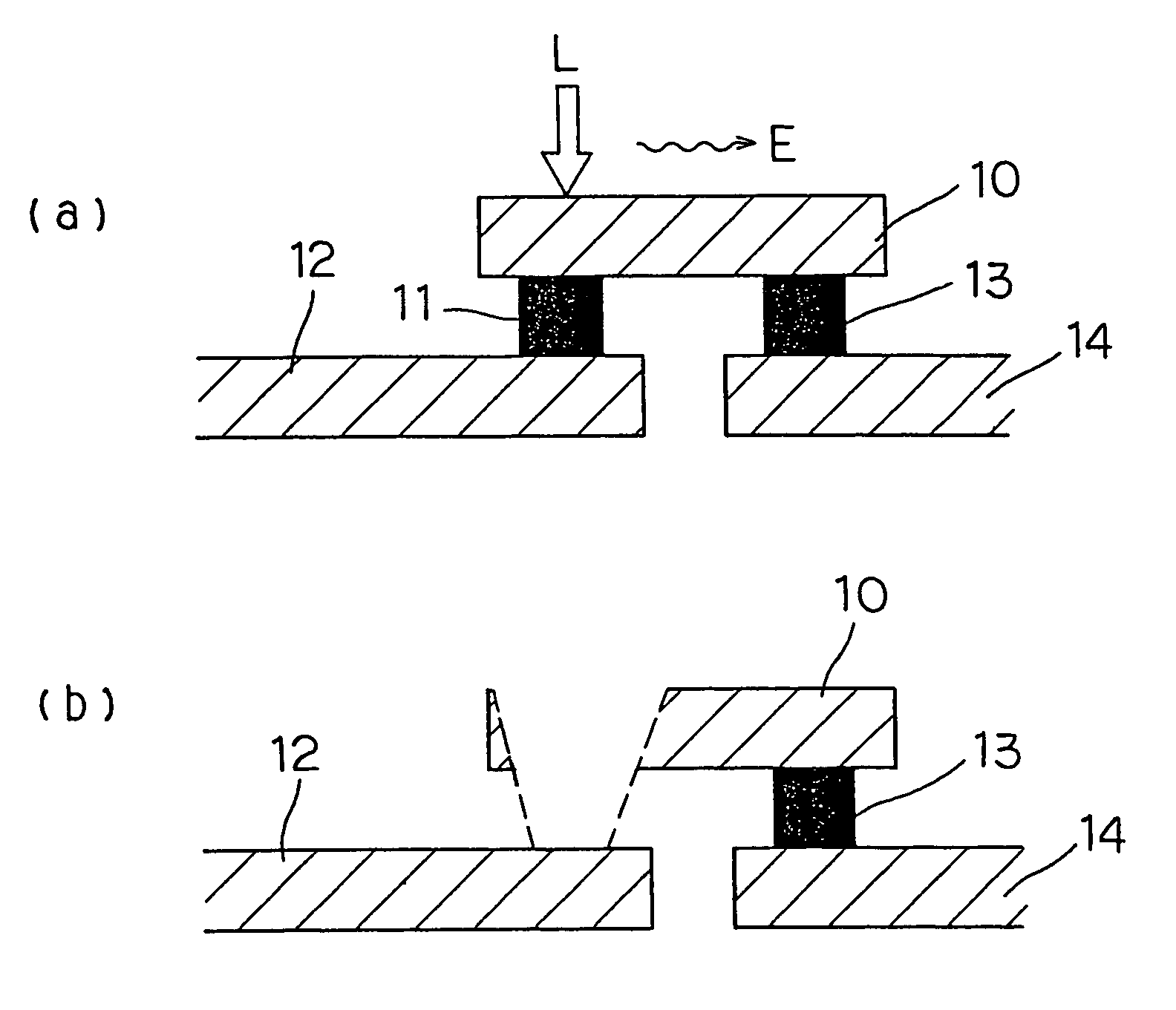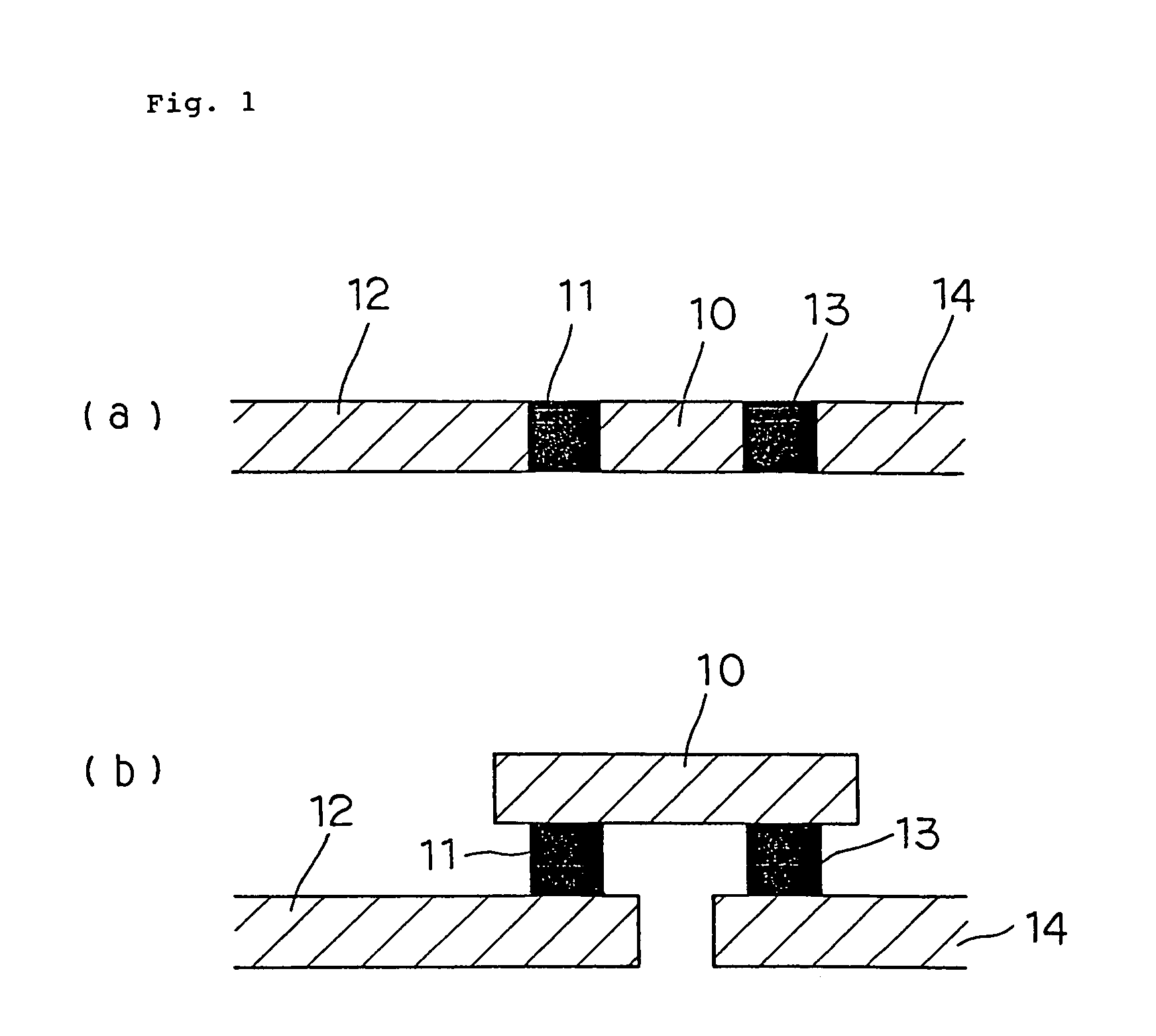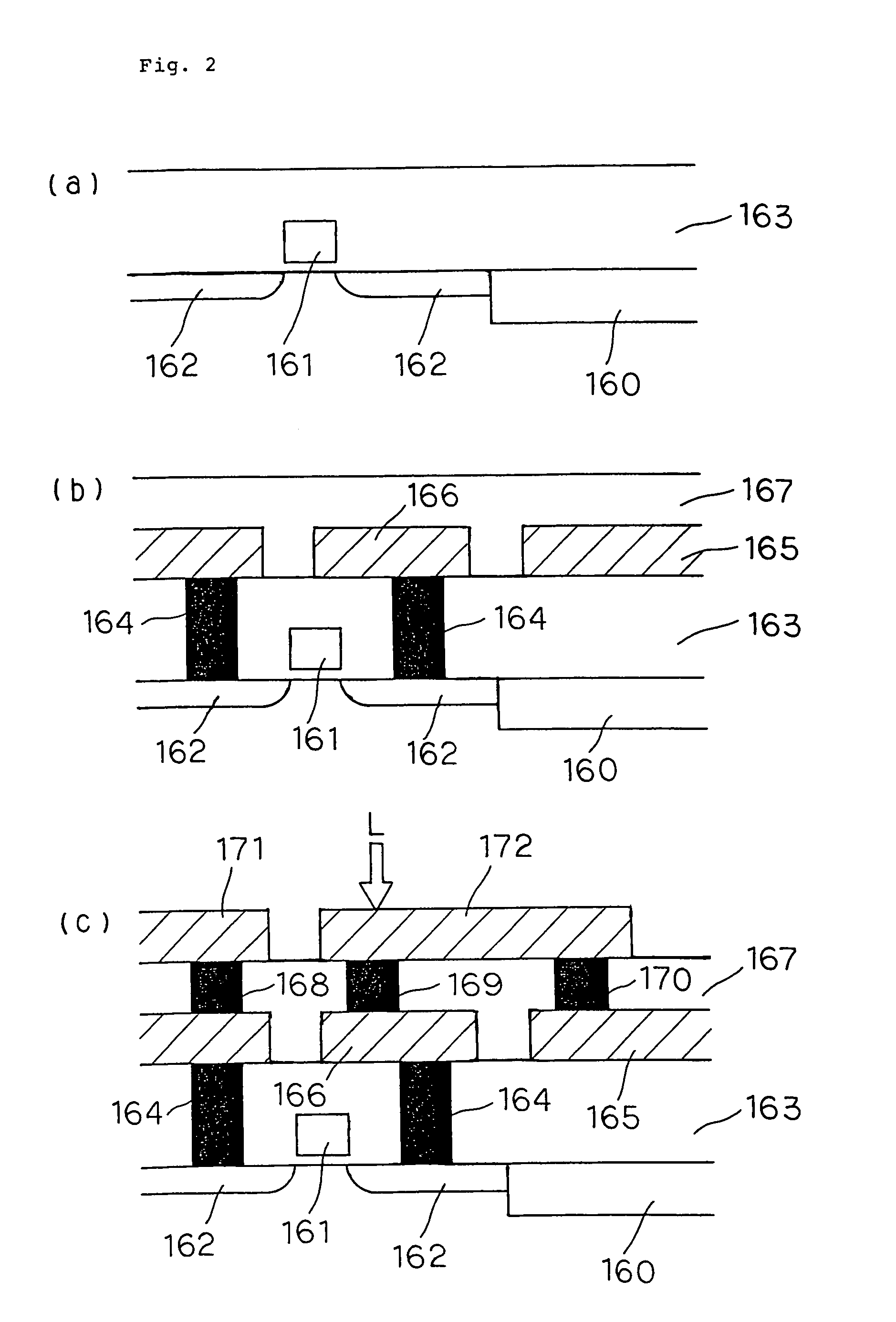Semiconductor device having a fuse and a low heat conductive section for blowout of fuse
a technology of a fuse and a low heat conductive section, which is applied in the field of fuse, can solve the problems of insufficient heat supplied by the laser beam, insufficient heat supplied by the fuse, and insufficient heat to blow the fus
- Summary
- Abstract
- Description
- Claims
- Application Information
AI Technical Summary
Benefits of technology
Problems solved by technology
Method used
Image
Examples
Embodiment Construction
[0039]In FIG. 1, there are shown a plan view (a) and a cross-sectional view (b) of one example of a semiconductor device structure, in the case that the fuse 11 and the first low heat-conductive section 13 are vertical type. In this case, the first interconnection 10 and the second interconnection 12 are connected to each other through the fuse 11, and at a site of the first interconnection 10 where the fuse is not connected, the first interconnection 10 and the third interconnection 14 are connected to each other through the first low heat-conductive section 13. In addition, the first low heat-conductive section 13 is formed from a material having a heat conductivity lower than that of the material to form the first interconnection 10.
[0040]More specifically, this first example of a semiconductor device has a multi-layered interconnection structure as shown in FIG. 2(c), comprising a fuse 169 which is formed by filling up, with a buried material, a through hole formed to run throug...
PUM
 Login to View More
Login to View More Abstract
Description
Claims
Application Information
 Login to View More
Login to View More - R&D
- Intellectual Property
- Life Sciences
- Materials
- Tech Scout
- Unparalleled Data Quality
- Higher Quality Content
- 60% Fewer Hallucinations
Browse by: Latest US Patents, China's latest patents, Technical Efficacy Thesaurus, Application Domain, Technology Topic, Popular Technical Reports.
© 2025 PatSnap. All rights reserved.Legal|Privacy policy|Modern Slavery Act Transparency Statement|Sitemap|About US| Contact US: help@patsnap.com



